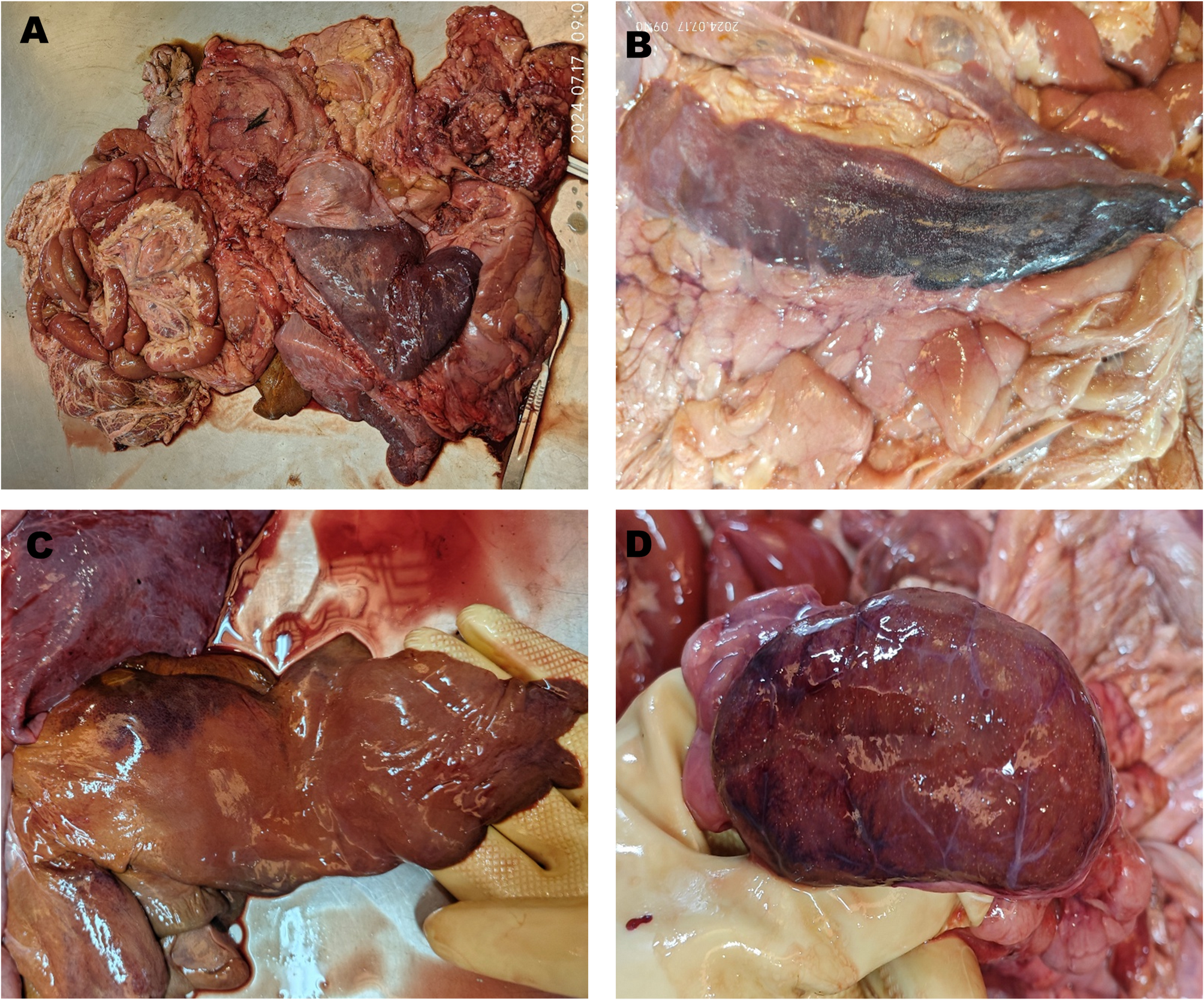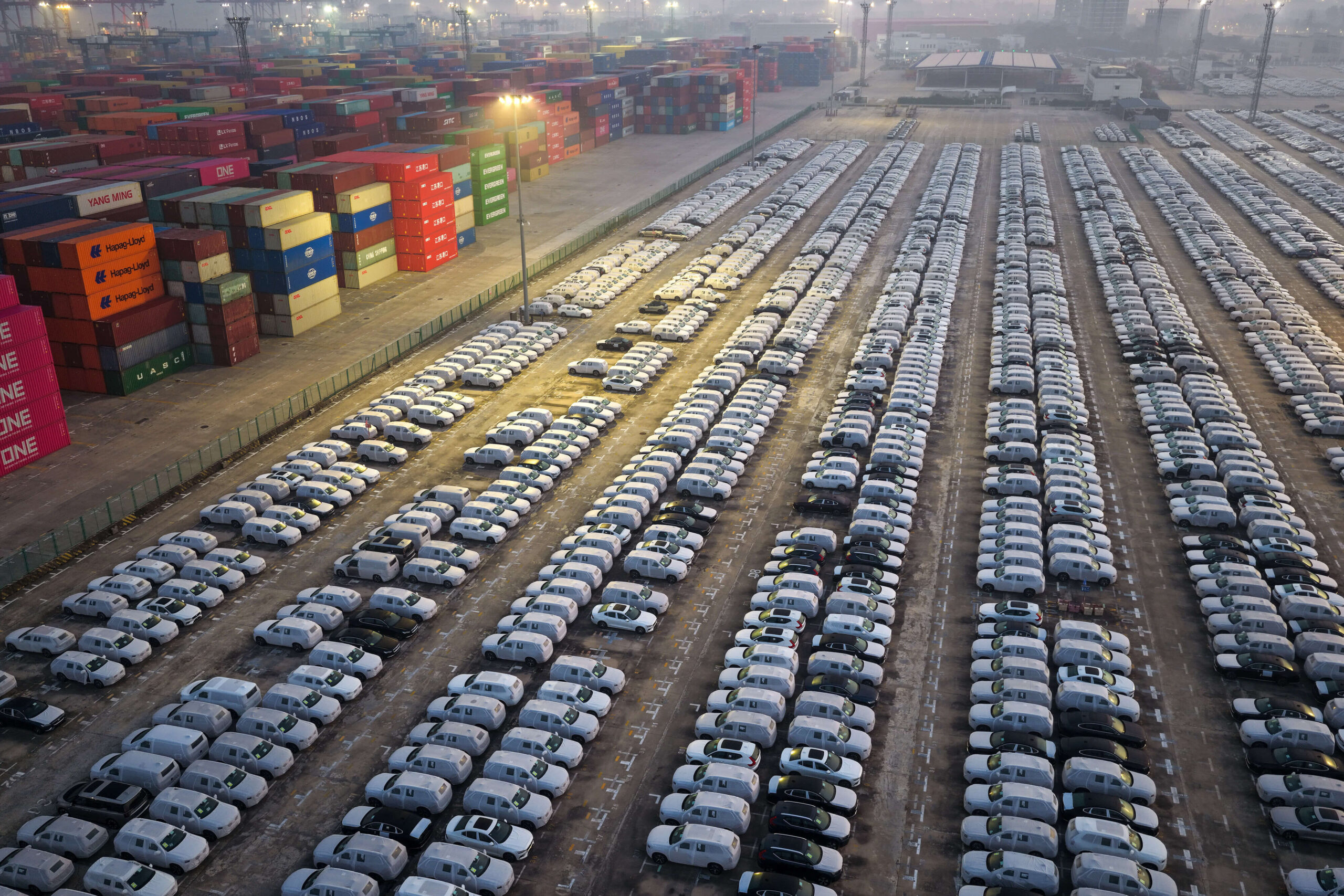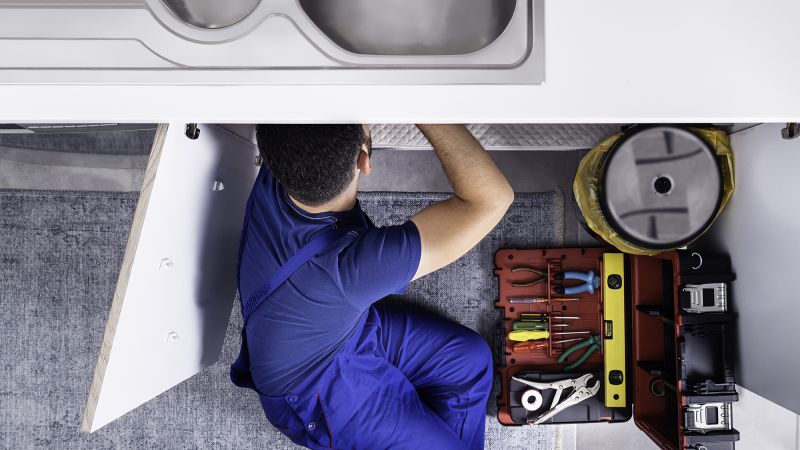Luo S, Liu Y, Xu X. Tigers of the world: genomics and conservation. Annu Rev Anim Biosci. 2019;7:521–48.
Google Scholar
Liu H, Yan Q, Zhao B, Luo J, Wang C, Du Y, Yan J, He H….

Luo S, Liu Y, Xu X. Tigers of the world: genomics and conservation. Annu Rev Anim Biosci. 2019;7:521–48.
Google Scholar
Liu H, Yan Q, Zhao B, Luo J, Wang C, Du Y, Yan J, He H….

That means even if data can be extracted from a floppy disk, there is often significant work needed to make it readable on a modern device. Peter Rees, an archivist at the Cambridge History of Innovation Project, likens the process to a form of…

Astronomers say they’ve captured the clearest look yet of a star on the brink of supernova.
An international team used NASA’s James Webb Space Telescope to backtrack and find the original star…

In this issue of MERICS Europe China 360°, we cover the following topics:
By Jacob Gunter and Grzegorz Stec
The EU is currently evaluating the effectiveness of its tariffs on Chinese-made electric vehicles (EVs) since their introduction a year ago. The countervailing tariffs of 17 to 35.3 percent, which were based on investigations into several EV makers in China by the Commission, came on top of the EU’s standard ten percent car import duty. Just how the EU measures the tariffs’ effectiveness depends on their intended purpose. Were they meant only to address price distortions from subsidies or to decrease or even stop the flow of EVs from China? Or were they meant to drive Chinese automakers to invest in production sites in the EU – or a combination of all of those?
If measuring the impact on price distortions, the result is mixed but leans positive. The Commission’s investigation was exhaustive and certainly enabled it to set tariffs measured to offset the subsidies China-based EV makers have enjoyed. However, they were based on specific support measures and could not take into account the price wars driven by overcapacity which have shaped EV-makers’ strategy to accept razor thin margins – and even losses. Their willingness to accept margins in export markets that are very low but still higher than those in China has created global price distortions.
If measuring effectiveness by stemming or even stopping the flow of China-made EVs (which is not a stated goal, but which some observers use as a metric of success), the result is a profound failure. Chinese EV brands doubled their market share in the EU in the last year, in part by quadrupling exports of plug-in hybrids (PHEVs) which circumvent the tariffs. That is happening even as European car exports to China continue to decline.
If measuring effectiveness by Chinese investments in EU production sites to avoid tariffs, the situation is difficult to judge. Chinese EV makers have announced several planned investments and production lines in the EU since the tariffs: BYD is modestly expanding an electric bus plant in Hungary, XPENG is licensing production of several models in Austria, and Chery invested in a large research and development (R&D) center attached to its existing investment in Spain.
However, it is difficult to determine the weight of the tariffs on those corporate decisions. Chinese EV makers that may have been considering investments in the EU may also have been deterred by Beijing’s order in fall 2024 to pause investments in member states that supported the EV tariffs. They may have interpreted it as Beijing discouraging investments generally in Europe. Now that Beijing knows EU member states’ would like more Chinese EV investments, China may allow or even encourage its EV makers to invest in those ”friendlier” member states.
China is expected to significantly increase its total car production and exports in the coming years. The China Passenger Car Association (CPCA) announced in September that it expects China to export as many as 10 million cars by 2030. Not all of those will be bound for the EU, but there are hard limits as to where sufficient numbers of customers can be found, especially as a market needs enough consumers who can afford such cars in the first place.

FIGO is delighted to partner with the Society of Obstetricians and Gynaecologists of Canada (SOGC) for the XXVI FIGO World Congress of Gynecology and Obstetrics, taking place on 31 October–5 November 2027 at the Montréal Convention Centre (Palais des congrès de Montréal).
After a rigorous selection process, Montréal was chosen as the host city for the FIGO World Congress 2027, recognised for its vibrant cultural scene, inclusive values, excellent accessibility for international delegates and strong commitment to advancing healthcare and research.
The Congress will be held at the Montréal Convention Centre (Palais des congrès de Montréal), a modern and sustainable venue in the heart of the city, offering state-of-the-art facilities to support scientific exchange, networking, and collaboration.
Join the FIGO newsletter to be the first to hear about early bird registrations and abstract submission opportunities for the world’s largest event in obstetrics and gynaecology.
The 2027 World Congress will be an unmissable opportunity for clinicians, researchers, advocates, and policymakers to come together, share knowledge, and strengthen global efforts to improve the health and rights of women and girls everywhere.
The world-class, evidence-based scientific programme will feature emerging science and discovery, late-breaking topics and controversies, interactive simulation labs and workshops, and inspiring plenary lectures.
FIGO looks forward to celebrating women’s health in the vibrant city of Montréal! Our outstanding scientific programme will bring together scholars, clinicians, and researchers from across the globe. Thanks to the dedication of SOGC and Montréal’s welcoming spirit, we will have the opportunity to connect, learn, and enjoy this landmark World Congress.
Professor Frank Louwen, FIGO President 2025–2027
SOGC is delighted to represent FIGO’s North American region by hosting the 2027 World Congress in Montréal. We look forward to welcoming delegates to an engaging and inspiring programme, and to sharing Canada’s rich culture, historic charm and leadership in women’s health.
Dr Diane Francoeur, SOGC CEO

Washington
—
The roughly 20 plumbers of Oak Creek Plumbing & Remodeling in the Milwaukee, Wisconsin area don’t just bring toolkits with wrenches, pliers and Teflon tape to customers’ homes these days. They also bring a tablet equipped with the latest version of ChatGPT.
The technology helps those workers automatically create invoices, work proposals and even brainstorm how to address complicated plumbing problems, company president Dan Callies told CNN. All they have to do is take photos of a broken water heater, for example, or write their observations in a prompt, and ChatGPT spits out a list of recommendations.
“It’s definitely been worth the investment,” Callies said. “Some of our older guys have learned to ask ChatGPT the right questions, and they’re kind of amazed with some of answers it comes up with.”
From office work to on-the-ground troubleshooting, blue-collar businesses are increasingly embracing AI to boost productivity, cut down costs and even replace administrative support roles. Some use popular AI software such as ChatGPT and Microsoft Copilot, while others use platforms tailored specifically for the trades with AI capabilities, such as ServiceTitan and Housecall Pro.
“It’s affecting both sides of our company, out in the field and internally within our office,” Callies said.
No humans are involved from when a customer requests services from Gulfshore Air Conditioning & Heating in Niceville, Florida to when a technician arrives at their home, thanks to AI.
And once the technician arrives, they use AI to diagnose the issue and pull up technical information within seconds — a task that used to require sifting through as many as five 60-page manuals, said Krista Landen, the company’s marketing and IT manager.
A survey of more than 400 tradespeople across North America by Housecall Pro earlier this year found that more than 70% of respondents said they have tried AI tools and about 40% said they actively use them. Younger professionals are leading the charge, the survey showed, though older workers are testing the waters, too.
AI’s integration and impact varies by industry, according to the survey; Plumbers were the most likely to say AI has helped their business grow; cleaners were the “biggest adopters of AI”; while electricians had “the highest satisfaction rates” with the technology.
Schools have also taken notice: Jason Altmire, president and CEO of Career Education Colleges and Universities, a trade association that represents more than 800 private vocational schools across the country, said several institutions are weaving AI into their curriculum in collaboration with employers.
“They want their graduates ready for jobs that are going to be available in the future, not jobs that were here five years ago,” Altmire said.
Still, some tradespeople are skeptical about how the new technology works and how it can be applied to physical tasks.
“There’s some hesitancy, so I wouldn’t say they’re all in,” said Edward McFarlane, chair of the board of directors at the Air Conditioning Contractors of America. “But the tide is definitely coming in.”
AI is slowly reshaping the economics of blue-collar America.
Businesses in the trades implementing AI are becoming more productive, allowing them to take on more projects or improve the quality of their services, said Laura Ullrich, an economist at job site Indeed.
“People go into the trades because they like doing the hands-on work itself, and if some of the administrative tasks can be automated, then that should help those workers lean into the parts of the job they like and do smarter work,” she said.
AI has already made a measurable impact on Gulfshore, which saw a $370,000 increase in revenue 30 days after upgrading to an AI marketing feature that automates campaigns.
The company said it also saw an increase of $150 in revenue per average ticket after implementing AI tools that helped technicians get through administrative tasks more quickly and allowed them to sell customers additional services or accessories. Landen said the higher revenue, if sustained, should eventually translate into higher compensation for technicians.
“We’ve been using these AI products since June, so we should start to see more of a benefit in order to roll out new compensation packages (for technicians) within the next six months,” she added.
Callies of Oak Plumbing & Remodeling said ChatGPT has allowed the company to “lower our overhead and provide better services or better value.”
AI’s growing adoption in the trades could mean businesses may not need to hire as many office workers for marketing and taking customer calls, economists and business owners tell CNN. That presents those businesses the opportunity to cut down on those costs.
For now, there’s broad agreement that AI is nowhere near taking away the jobs of technicians, at least not until robotic technology significantly advances. It’s mostly proving to be a useful tool for tradespeople.
“All of our technicians are running more efficiently, and they’re less stressed,” Landen said. “I feel like I am a real life Jetson living in the future.”

The Moon is up and easy to spot tonight. Its surface is covered in craters and plains that are nice and easy to see, thanks to where we are in the lunar cycle. The lunar cycle is the Moon’s…
This request seems a bit unusual, so we need to confirm that you’re human. Please press and hold the button until it turns completely green. Thank you for your cooperation!
This request seems a bit unusual, so we need to confirm that you’re human. Please press and hold the button until it turns completely green. Thank you for your cooperation!